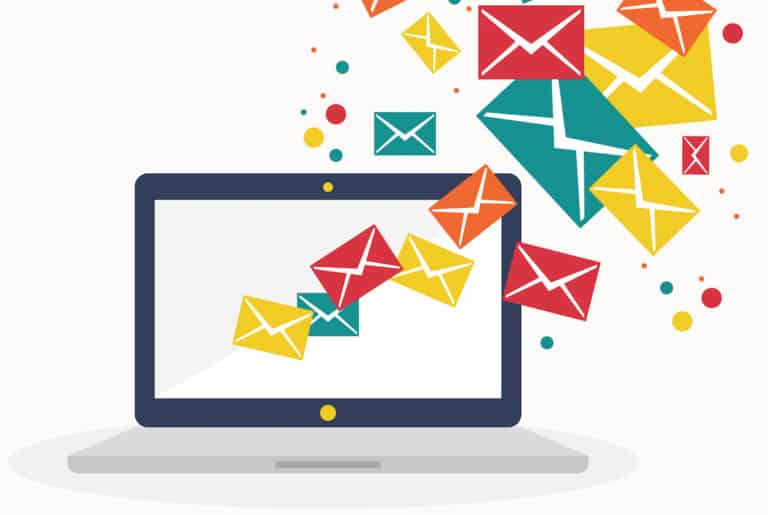
You’ve probably heard the news–as of Feb 1, 2024, Gmail and Yahoo are enforcing new rules for “bulk senders” and it seems confusing and sudden. You might be concerned about the future of your cart abandonment recovery and other email campaigns. As your trusted cart abandonment email solution provider, we want to assure you that these changes are not obstacles but rather opportunities to enhance the effectiveness and security of your campaigns.
In short, Gmail and Yahoo’s announcement is good news for you and we’ll show you why!
What are these “Bulk Sender Changes”?
Here’s what Google has to say:
Google has introduced stringent requirements for bulk senders, with a focus on strengthening email security and reducing the prevalence of spam. Key elements include the implementation of Domain-based Message Authentication, Reporting, and Conformance (DMARC) protocols, which require senders to authenticate their domains to prevent unauthorized parties from sending emails on their behalf. Additionally, Google encourages the use of Transport Layer Security (TLS) encryption for added protection during email transmission.
Yahoo’s message is strikingly similar:
Yahoo has implemented updates to enhance email security. Bulk senders are urged to adopt DMARC authentication to validate their domains and prevent unauthorized email activities. These changes aim to create a more secure email environment and reduce the risk of spam, ensuring a safer and more reliable experience for users.
Essentially, this means that both of these providers will be looking at four main components, when determining bulk sender status:
Bulk Sender Change #1: Email Authentication Is REQUIRED (DKIM, SPF and DMARC)
What does it mean?
Google and Yahoo want to see authenticated emails, with any links going back to the same domain the email was sent from. This means you must have proper permission in place (DKIM records configured in Recapture) for sending emails from your own domain through our service, e.g. [brand]@[yourdomain].com.
What do I need to do?
By default, we use a high-reputation sender domain that is generic (much like MailChimp and other ESP services)–rcmsv.net. We’ve done everything we can to make this deliverable–setup the SPF, DKIM and DMARC records, optimzed the servers for sender reputation, and so on. But it’s best to have a custom sender domain (your email domain, not ours) to use as the From email in your emails.
Custom sender domains are basically a way for us to send email on your behalf, making your domain the “from email” of all your marketing communications through Recapture. In order to enable this feature, we need you to add some records to your DNS that we provide and then we are allowed to send emails using your domain.
Action Required: Setting up a custom sender domain requires just a bit of work, but we can assist with it very easily. Contact us directly to get the records you need and we’ll send you detailed instructions on how to add them to your DNS.
Bulk Sender Change #2: One Click Unsubscribe For All Emails
What does it mean?
Recipients of your emails need to be able to unsubscribe from any campaign/email you send with a single click.
What do I need to do?
All Recapture emails automatically include an unsubscribe link, and already comply with One Click Unsubscribe for Gmail and Yahoo. You can see this by testing a send to any account in Gmail or Yahoo and notice that the top of the email in the email client has an Unsubscribe button at the top of the email.
Action Required: No action is required for Recapture customers at this time.
Bulk Sender Change #3: Maintain Low Complaint Rates (No SPAM)
What does it mean?
Google wants you to maintain your complaint rate at less than 0.1%. If you go higher than 0.3%, you will be automatically BLOCKED. You don’t want this to happen, ever.
What do I need to do?
Recapture’s abandoned cart emails naturally get high engagement rates and low unsubscribe & complaint rates, because these emails are considered transactional, not promotional. You can monitor your complaint rates from your Campaign pages in Recapture (click on this link to get to your Campaigns, and then find the campaign to click the “Reports” button to see your complaint and unsubscribe rates)
If you notice your unsubscribe or complaint rate is higher than normal, then you should audit your campaign to determine what it is about your emails that your customers don’t like.
Action Required: No action is generally required by Recapture customers at this time.
Bulk Sender Change #4: These Are REQUIRED For Certain Email Send Volumes (Recommended For Everyone Else)
What does it mean?
How many emails you send in a day determines your email send volume. Gmail and Yahoo are classifying any person who sends more than 5,000 emails per day as “high volume” and they must comply with the “bulk sender changes”.
It’s a little too easy to get to 5,000 emails in a day if you send just one broadcast email to your contact list of more than 5,000 customers. This is the part that most people miss–you probably qualify as a “high volume sender” if you have a store with a mailing list bigger than a few thousand customers!
What do I need to do?
If you send more than 5,000 emails in one day, you will be classified automatically as a “bulk sender” and the 3 rules above are extra critical. You must have a custom sender domain in place, and also have your domain configured with DKIM, SPF and DMARC to be fully compliant.
But you say–“aha, I never send more than that…I’m safe! I don’t have to do anything!”
That’s, unfortunately, very wrong.
If you send 5,000 messages a day or more into either of the world’s largest mailbox providers, starting February 2024, your email domain must have a DMARC policy in your DNS. These messages must pass DMARC Alignment or they will not be delivered. This includes messages sent on behalf of your organization by Recapture that use your email domain.
Note: If you’re also hosting your domain on Google Workspace, your internal message volume will likely count towards this daily limit–no matter what you’re sending on Recapture.
Gmail and Yahoo are using 5,000 emails per day as a threshold for now, but that’s not to say they won’t look at lower thresholds in the future, or keep an eye on those who send more than 1,000 in a day (*which is INCREDIBLY easy to do if you send any broadcast, with any provider!).
Action Required: If you are sending broadcasts and have a customer list more than a few thousand in size, or you have an order volume of more than 500 per day, you must add your custom sender domain ASAP. For all others, we recommend it anyway as a preventative measure. Contact us directly to get your records for DKIM on Recapture
Your best defense, and your best way to ensure delivery into your customers’ inbox is to comply with the rules.
So, Why Is This A Good Thing?
What does all of this mean for you? Here’s the result of following these rules:
1. Improved Deliverability and Inbox Placement
Google’s emphasis on Domain-based Message Authentication, Reporting, and Conformance (DMARC) protocols is a game-changer for the email marketing landscape. By configuring your domains to authenticate emails, you not only comply with Google’s requirements but also significantly improve your email deliverability. Authenticated emails are less likely to be marked as spam, ensuring that your cart abandonment emails reach the intended recipients’ inboxes promptly. This means more eyes on your recovery messages and a higher chance of converting potential customers.
2. Enhanced Trust and Brand Credibility
In the era of online transactions, trust is an absolute requirement. Google’s bulk sender requirements preventing scammers and bad actors from sending messages on behalf of your email domain. When you make these changes, you signal to both email service providers and your customers that your cart abandonment recovery emails are not only effective but also secure and trustworthy. You gain credibility with your customers, leading to higher engagement and a more loyal customer base.
3. Strengthened Data Security with TLS Encryption
Another positive aspect of Google’s requirements is the encouragement of Transport Layer Security (TLS) encryption. This additional layer of security ensures that the content of your cart abandonment emails remains confidential during transmission. With the rising importance of data privacy, especially in e-commerce transactions, incorporating TLS encryption not only aligns with industry best practices but also enhances the overall security of your recovery campaigns. This added security measure reinforces your commitment to safeguarding sensitive customer information, fostering a sense of confidence among your audience.
So how do you ensure your Recapture campaigns remain active?
Easy: Contact us directly to get the DKIM records you need and we’ll send you detailed instructions on how to add them to your DNS. We’ll also help you do a domain scan to see if there are any other issues you need to take care of on your side as well!
Read More on Google’s Bulk Sender Updates
We know this change can be daunting but we encourage you to embrace Google’s new bulk sender requirements as an opportunity to elevate your cart abandonment recovery campaigns. Improved deliverability, enhanced trust and credibility, and strengthened data security are just a few of the benefits awaiting those who make these changes. The Recapture team is dedicated to supporting you throughout this transition, ensuring that your cart abandonment recovery efforts continue to thrive in this evolving email marketing landscape.
Thank you for your trust in Recapture. We work to earn your business every month here.





